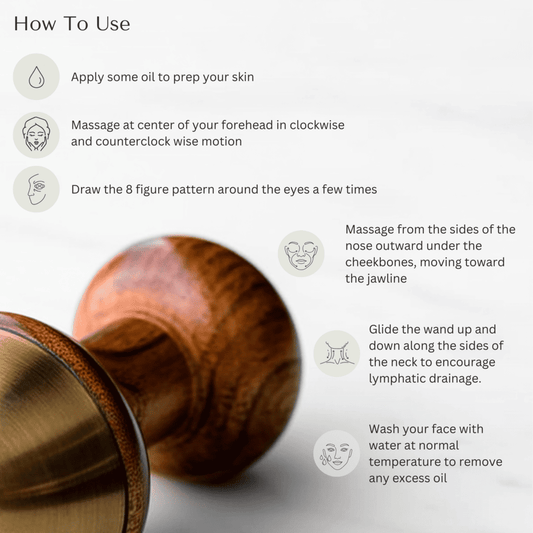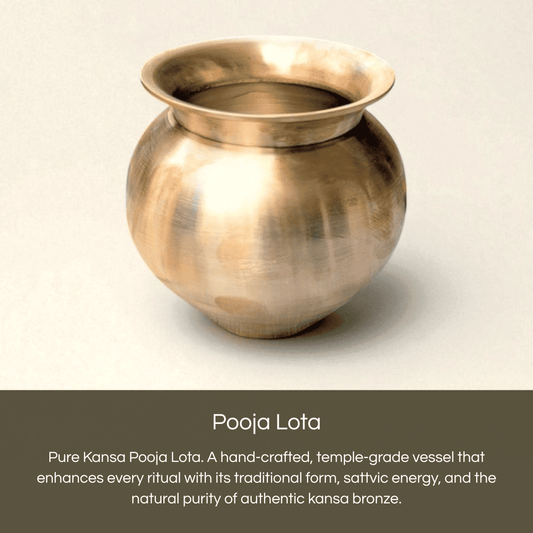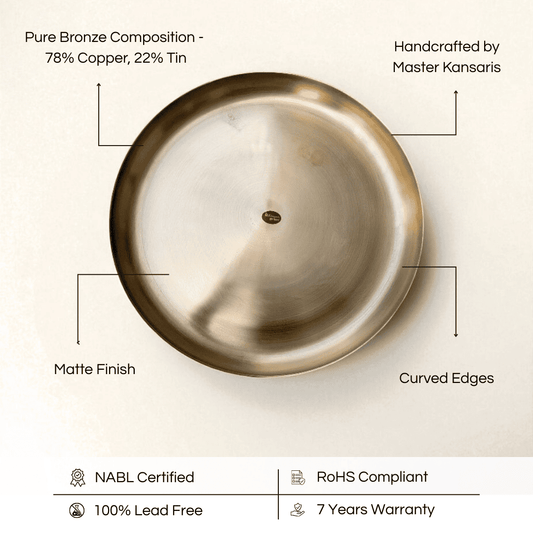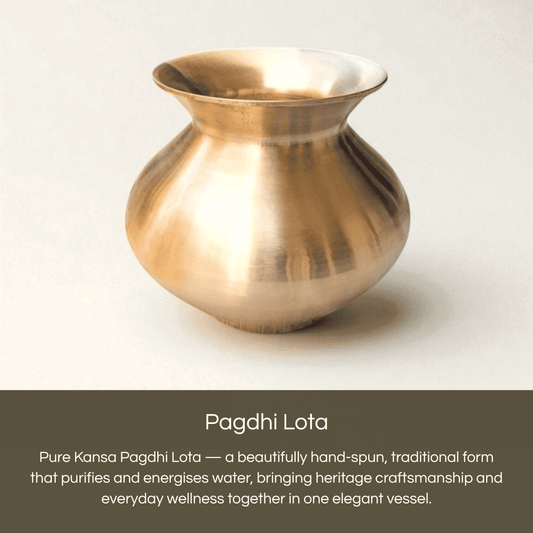
Do Kansa Utensils Go Black?
Kansa—an alloy of copper and tin—has been prized in Ayurveda for centuries. From Kansa Vatki bowls used in massage therapies to cookware and drinking vessels, these utensils are celebrated for both their health benefits and striking finish. A common question among first-time users, however, is: why do Kansa utensils sometimes go black? Let’s separate Ayurvedic fact from modern myth and understand the real chemistry at play.
The Myth: “Black Residue = Toxins”
Many believe that when a Kansa Vatki bowl turns black during an oil massage, it’s because “toxins” are being drawn out of the body. While this sounds appealing, it’s not accurate. The black discoloration is not a literal expulsion of impurities. Rather, it’s simply a natural reaction between the metal and the oils used during the therapy—a reaction you can actually embrace as part of the Kansa experience.
The Science Behind the Blackening
1. Bronze Oxidation & Patina Formation
Bronze, including Kansa, which is a type of bronze alloy, develops a patina when it comes into contact with air and moisture. This patina can display various colors such as brown, black, red, or even blue-green. Rather than being detrimental, this thin layer of corrosion serves to protect the metal underneath from further damage. In fact, many collectors and artisans value patina for the unique character it brings to bronze items.

2 Oil–Metal Reaction in Kansa Vatki Massage
When you use oils—coconut, sesame, or other Ayurvedic blends—during a Kansa Vatki massage, those oils interact with the metal surface. Small traces of the alloy can react with fatty acids in the oil, depositing a harmless residue that appears black on your skin or bowl. This is purely a surface phenomenon and doesn’t reflect toxins leaving your body.
Food Vessels & Cookware
When you cook or store food in bronze or Kansa cookware, you may notice:
-
Dark Spots or Striations
These are localized patina formations where moisture and food acids (like lemon, tomato, or vinegar) interact with the metal. -
Overall Darkening Over Time
Repeated heating and cooling cycles will gradually deepen the patina’s hue—often to a rich, antique bronze tone.
This coloration is simply the same protective patina that guards bronze cookware from corrosion. It won’t leach harmful substances into your food. In fact, many chefs prize this natural, evolving surface because it enhances non-stick properties and adds a unique character to every pot and bowl.
Exterior Charcoal Finish: Safe or Not?
You may also notice some Kansa products sporting a matte, “charcoal” finish on the outside. Rest assured, this is only the natural colour the alloy takes on when heated during manufacturing—no dyes or chemicals are added. It’s entirely benign and often celebrated for its rustic, artisanal look.
Conclusion
So, do Kansa utensils go black? Yes—but it’s not about toxins. It’s simply bronze doing what bronze does: oxidizing, reacting with oils, and developing a protective patina. Embrace it as part of the authentic Ayurvedic experience, and rest easy knowing the black residue is perfectly harmless—just another testament to Kansa’s time-honoured craftsmanship.


















